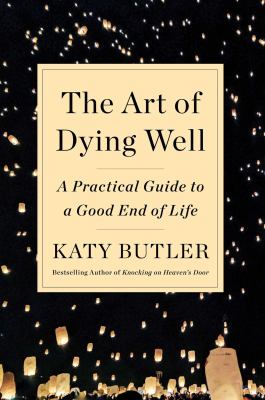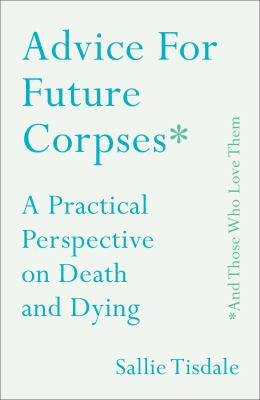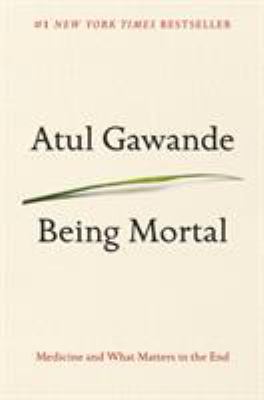An End of Life Story: Considerations & Planning for Death
Posted on November 3, 2021 at 6:00 am

By Dana Mannino
Most people don’t like to think about death. There are a few exceptions, as is the case with most things.
Shortly after college, I had the privilege to work for a woman who was very comfortable discussing and preparing for the end of her life. We’ll call her J.
My time with J changed how I approach the topic as well. When J called me, I had just finished college and was hunting for a meaningful volunteer opportunity while I figured out what to do with my life. J was 97, and she needed someone to help her open cans while she cooked her dinner.
At the time, I was irked that my quest to make a difference had led to something as mundane as spaghetti sauce, but I agreed to come serve as her in-home caregiver.
I had known J all my life. J had mentored my mother during her high school years. J’s great granddaughter was my age. When I was in 2nd grade, J would set up play dates for her granddaughter and me at the therapy pool in her retirement community.
J was a planner! Even in my earliest recollections of her, she was preparing for a happy death. Whenever she bought something, she decided who to give it to when she died. “I won’t be around here for long,” she said at least once a visit.
When I became her caregiver, J showed me where she kept the documents that described the kind of medical care she wanted her family to choose for her when (not if) she was unable to choose for herself. She had her will in order and had written down detailed instructions for her funeral. She met personally with the musicians who would play during her funeral.
I cared for J for two years. During that time, she suffered two strokes. She bounced back from one, but the second slowly claimed her. I started out opening cans but ended keeping her comfortable as we waited for the last journey.
In the last months of J’s life, she couldn’t communicate with us. But thanks to her documents, she still had some control. She was able to stay in her home, as she wanted. She wasn’t hooked up to any machines. We played her favorite TV shows. We waited.
Sometimes it was hard to follow J’s directions. I wondered if she had thought them all the way through. Sure, she wanted to stay in her home. But did she realize this meant she would be taken care of by amateurs? I remember the week we all learned how to change adult diapers. Poor J suffered through the learning curve with us. I wondered, had she made the right choice?
But J’s choices were informed choices. J had cared for her husband during his last illness. She had talked to her health care provider about her care plan. She was an avid reader of health literature. She had weighed the benefits, and for her, staying home was worth the trouble.
It took weight off our shoulders to know that the decisions had been made. The family didn’t have to hash them out together and come to a fragile consensus while also processing their grief. We could follow orders and do our best.
J passed away at age 99. Walking with her during her last years got me interested in the choices we make about death and why we make them. I started reading books and articles by doctors about the choices they would make for their own end-of-life care. I wondered what kind of choices I would want.
Often, we think of “setting one’s affairs in order” as a task that only belongs to the mature crowd. But life is fragile at every age. Car accidents happen, as do natural disasters. It’s not a bad idea to put a few instructions in writing even if death feels far off.
An added benefit of exploring this idea for yourself is that it serves as an opening for talking to elderly loved ones about their wishes. Lots of people hope their loved ones leave some instructions, but it can be a hard thing to bring up in conversation. Sharing with your loved ones that you have started writing down your own wishes can give you the opening you need.
If this is your first time thinking about end-of-life plans, I suggest starting with a book.
Many people have written about end-of-life planning—nurses, doctors, caregivers, and families who have been through the journey before. I suggest picking a book that has been written by someone who you relate to and feel that you can trust. After you have a sense of what is involved, you can start formalizing your wishes in legal documents.
Peter Pan muses that “to die will be an awfully big adventure.” Even on my bravest days, I am not sure that I can match his sentiment. But I do feel better after listening to the stories of people who have faced the great adventure and after making some preparations of my own. I hope you find it comforting too.
Here are some places to get started.
Books on End-of-Life Care
The Art of Dying Well: A Practical Guide to a Good End of Life, by Katy Butler
Butler is a journalist with experience caring for family members during their last days. Hers is a well-researched, practical book filled with real-life stories. I recommend this book to individuals who want to focus on living their last years, months, and days well.
Advice for Future Corpses and Those Who Love Them: A Practical Perspective on Death and Dying, by Sallie Tisdale
Tisidal, a former palliative care nurse, offers an overview of both the physical and emotional process of dying and grieving. Tisdale’s tone is calm, easy to understand, and reassuring. I recommend this book to individuals and families currently facing a terminal illness.
Being Mortal: Medicine and What Matters in the End, by Atul Gawande
Gwande, a surgeon and the child of Indian immigrants, takes a broad look at the experience of aging and dying in America, comparing it to other cultures and providing historical context for what we consider normal. I recommend this book to those who are not currently facing an end-of-life situation and are interested building some context before making their care plans. While not a how-to manual, this book has definitely informed my approach to end-of-life issues. It is also great for book clubs.
Resources for Formalizing Your Wishes

In Washington state, there are four main legal forms used to record a person’s wants for end-of-life issues:
- Will and Testament: Describes how to allocate and dispose of your property when you die.
- General Durable Power of Attorney: Authorizes an individual to make financial and legal decisions when you are unable to do so.
- Durable Power of Attorney for Healthcare: Authorizes a person to make healthcare decisions on your behalf if you are unable to do so. This person can also be referred to as a healthcare proxy. You can name a healthcare proxy in addition to or instead of having an advanced healthcare directive.
- Advanced Healthcare Directive: Informs doctors and family members what kind of care you want in situations in which you are unable to make medical decisions for yourself. It can be very specific or very broad. It can include a section naming a durable Power of Attorney for Healthcare.
Customizable versions of forms mentioned above are available for free to in-district library card holders through Washington State Legal Forms powered by Gale US Legal Forms. Once you are at the Legal Forms website, search for the “Life Documents Planning Package.”
Portable Orders for Life-Sustaining Treatment
Unlike the above legal forms, the Portable Orders for Life-Sustaining Treatment (POLST) is a medical form. It turns a patient’s wishes into medical actions ordered by a physician. The POLST must be signed by a health care provider.
This form is only for individuals with a serious health condition who are likely to find themselves in a medical emergency and unable to communicate their needs. It tells first responders what kind of care the individuals wants during a medical emergency.
Patients usually post their POLST on their bedroom door or bedside table so that medical professionals see it enroute to providing care. It can be carried from one care setting to another, ensuring that the patients’ wishes are carried out in all contexts (home, hospital, care center, hospice, etc.).
You can see the Portable Orders for Life-Sustaining Treatment (POLST) Form from the Washington State Medical Association as well as a POLST patient information brochure. When using this form, you will need to consult with a medical professional.

Tags: adults, advanced healthcare directive, death, durable, end of life, Legal Forms, medical directive, power of attorney, senior, washington state legal forms, will



